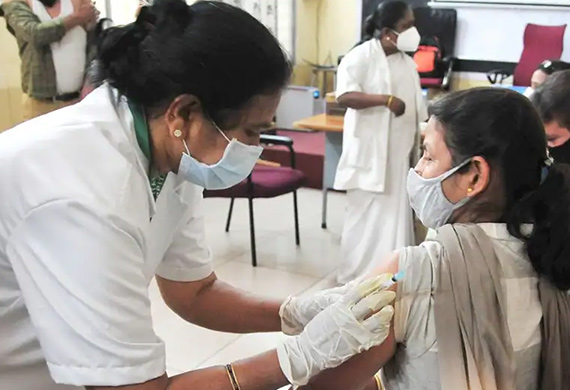
Narrowing Gender Disparity in Indian Vaccination Drive
By: Navyasri, Writer, Womenentrepreneurindia
With the start of vaccination efforts in most countries throughout the world, the year 2021 brought with it a ray of hope. The Indian Vaccination Drive is apparently unbiased; the program does not discriminate among its citizens. However, examining the information on the vaccine drive revealed an unexpected result. In practically every state of the country, the gender disparity in vaccination was widening.
As of the 1st of June 2021, there was a 15% gender gap (CoWin), with a higher percentage of men receiving their first vaccination dose. The gender divide was particularly pronounced in Jammu and Kashmir, Delhi, and Uttar Pradesh. Almost all Indian states had severe gender disparities.
What was the reason for Gender Disparity in Vaccination Drive?
One could assume that our societal systems are to blame for the gender disparity in vaccination. The concept of home for women and world for males complicates the arrangement. According to World Bank data, women in India are not just falling behind in terms of vaccination but also in acquiring adequate nourishment. Within a household, males often receive a larger share of food and better health care, while women's medical requirements are often neglected. It's no surprise that women are falling behind in this vaccination drive.
At the start of the campaign, pregnant and lactating women were not included in the vaccine coverage. Another barrier is the digital divide; most rural women still do not have access to a smartphone, and vaccination centres are far distant from their houses; as a result, they always look for someone to accompany them.
The women would believe that other family members should be vaccinated before them because if the housewife is vaccinated first, the execution of all daily chores would be hindered in the future days since the woman may seek some rest. Fake news and rumours are a significantly more serious reason. When the vaccination drive was made available to anyone above the age of 18, wild rumours spread like wildfire. There were misconceptions that women shouldn't get vaccines during their menstrual cycle and that vaccines cause infertility in women. They are afraid that the vaccine would interfere with their ability to conceive and bear children, and this is making them refuse to get vaccinated. Despite the abundance of materials and efforts to raise awareness, individuals in rural areas of the country are mostly cut off from these, relying on rumour. The rumours were so widespread that the government was made to announce clarifications concerning vaccine safety.
Narrowing Gender Gap in Vaccination Drive
The COVID-19 vaccination drive in India has gained momentum over the past few months since its rollout. While the gender gap in vaccination was significant in the early months of the campaign, it appears to be progressively narrowing now. Females received more vaccination doses than males in the states of Andhra Pradesh, Kerala, Tamil Nadu, Mizoram, and the union territory of Puducherry.
Initiatives aimed at making vaccinations more accessible to people in low-income and rural communities are likely to help women as well. Decentralized vaccination camps are being set up in villages and communities in various states, removing the need for people to travel great distances to neighbouring vaccination centres.
More women are likely to get vaccinated as a result of this. Vaccination clinics now accept walk-in registrations and registrations on the spot. As a result, women who have been unable to register via the Co-WIN site can get vaccinated immediately at the centre. In Mumbai, a walk-in vaccination drive was held at several locations throughout the city, with a focus on women.
Even while these are hopeful steps toward closing the gender gap, more has to be done across states to ensure that immunizations are truly accessible to all. The National Commission for Women (NCW) recommends that more focus be made on public health awareness and attracting more women to vaccination clinics. Accredited Social Health Activists (ASHAs), Anganwadi Workers, and other social and community health workers can help with this. Breaking down long-held gender stereotypes and prioritising the health and well-being of women in the country is critical.
There is currently minimal data on immunizations for transgender, non-binary, gender fluid, and other people who fall under the category of 'Other' on the Co-WIN dashboard.
The Gender Parity Index for vaccinations has been calculated as of October 19th, 2021. The GPI for India as a whole is 0.98. (the ideal ratio would be 1). According to a chart based on the gender parity index, a socioeconomic statistic published by Unesco, this value was 0.9 on June 27.
Andhra Pradesh (1.1), Assam (1.0), Karnataka (0.1), and West Bengal (0.1) are the states with the highest GPI at the time (1.0). Gender parity is defined as a GPI between 0.97 and 1.03 in research terminology. The national capital, Delhi, has a score of 0.83, while Goa has a score of 0.85.
The GPI is 0.9 in Maharashtra, where special only-day women's drives are organised in the city Mumbai. In Maharashtra, men receive 4.78 crore injections compared to 4.06 crore women who received vaccination.






